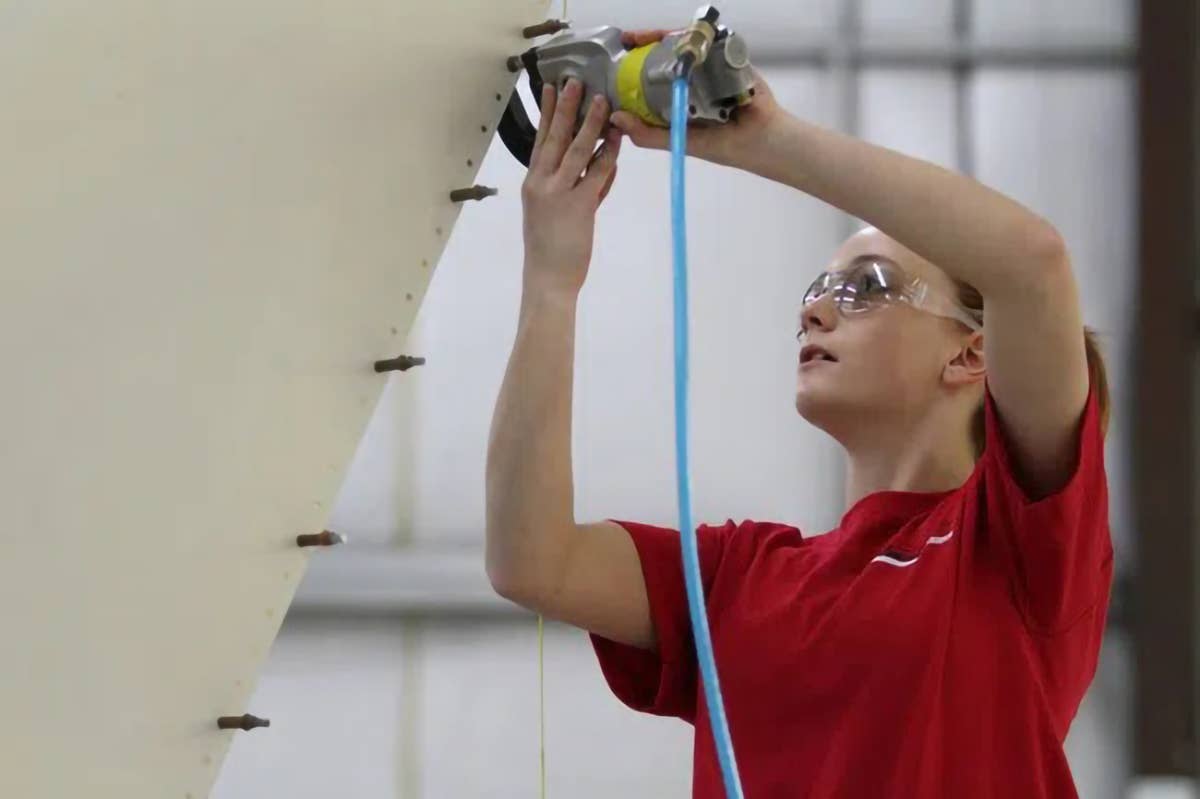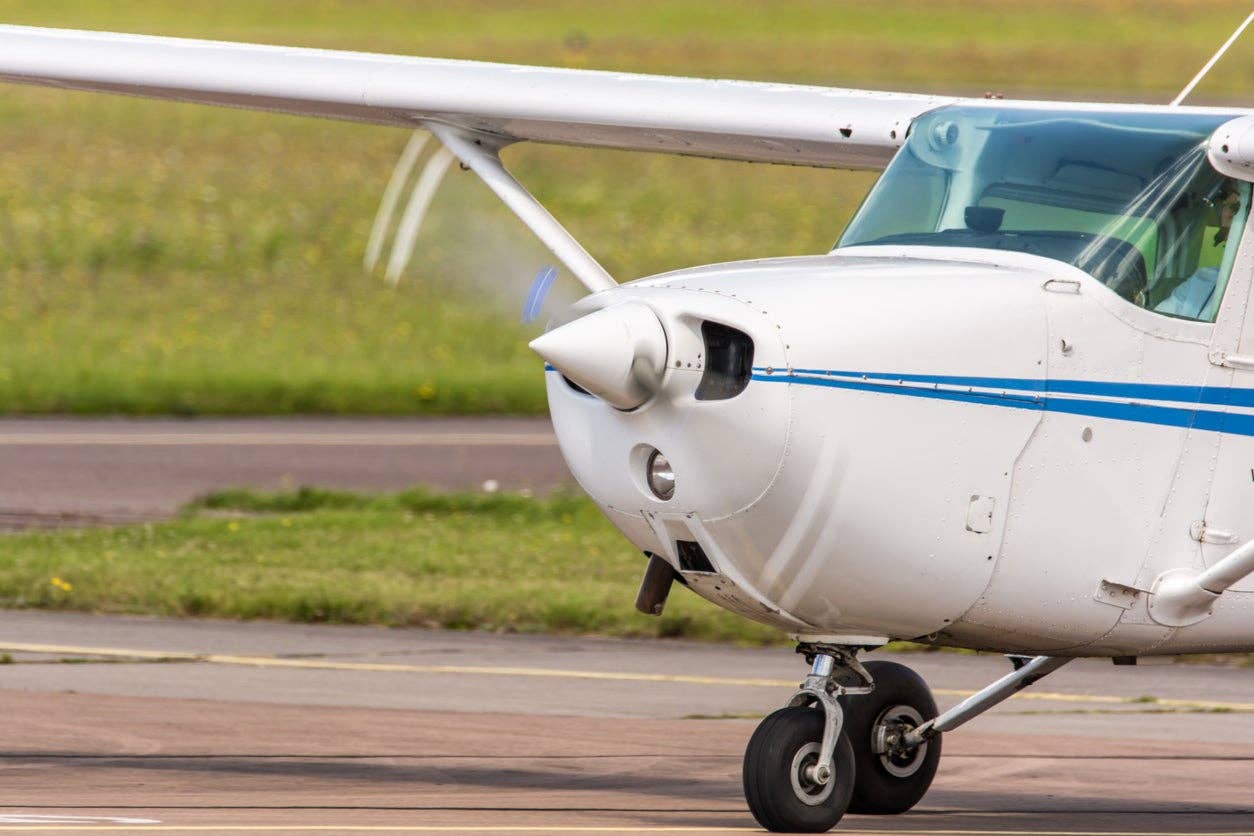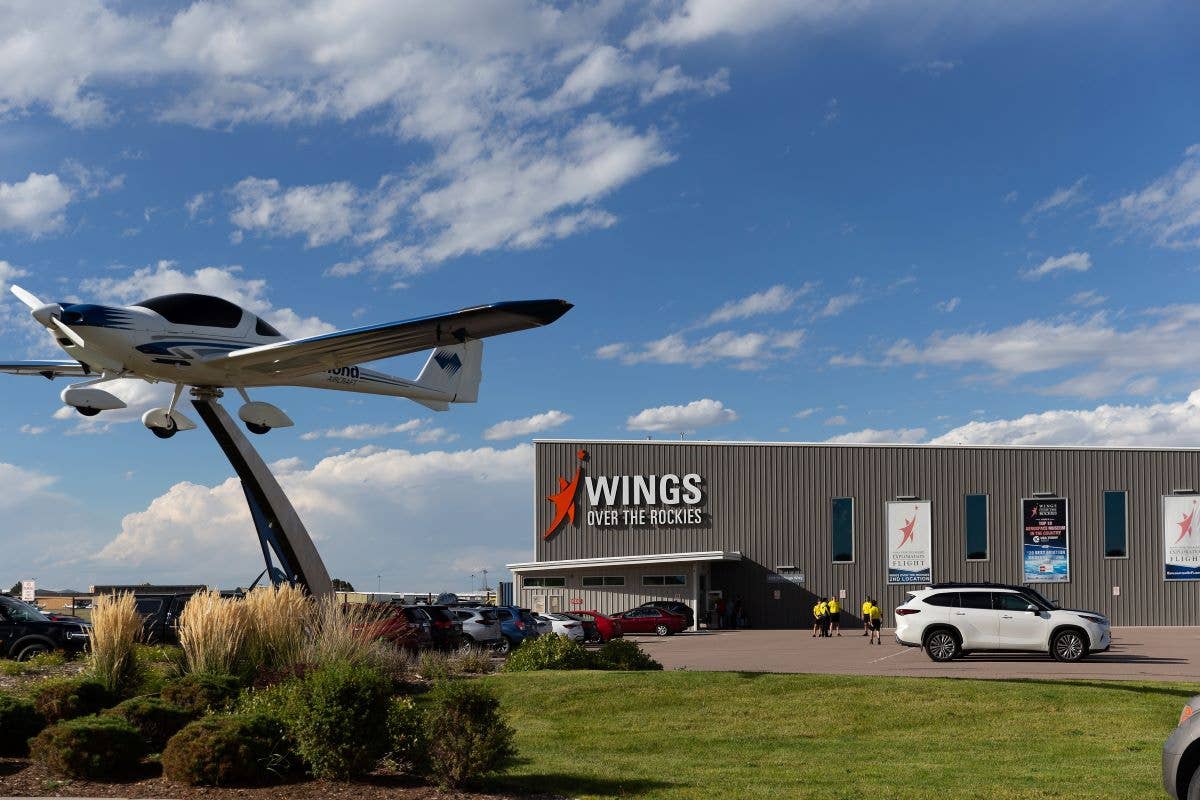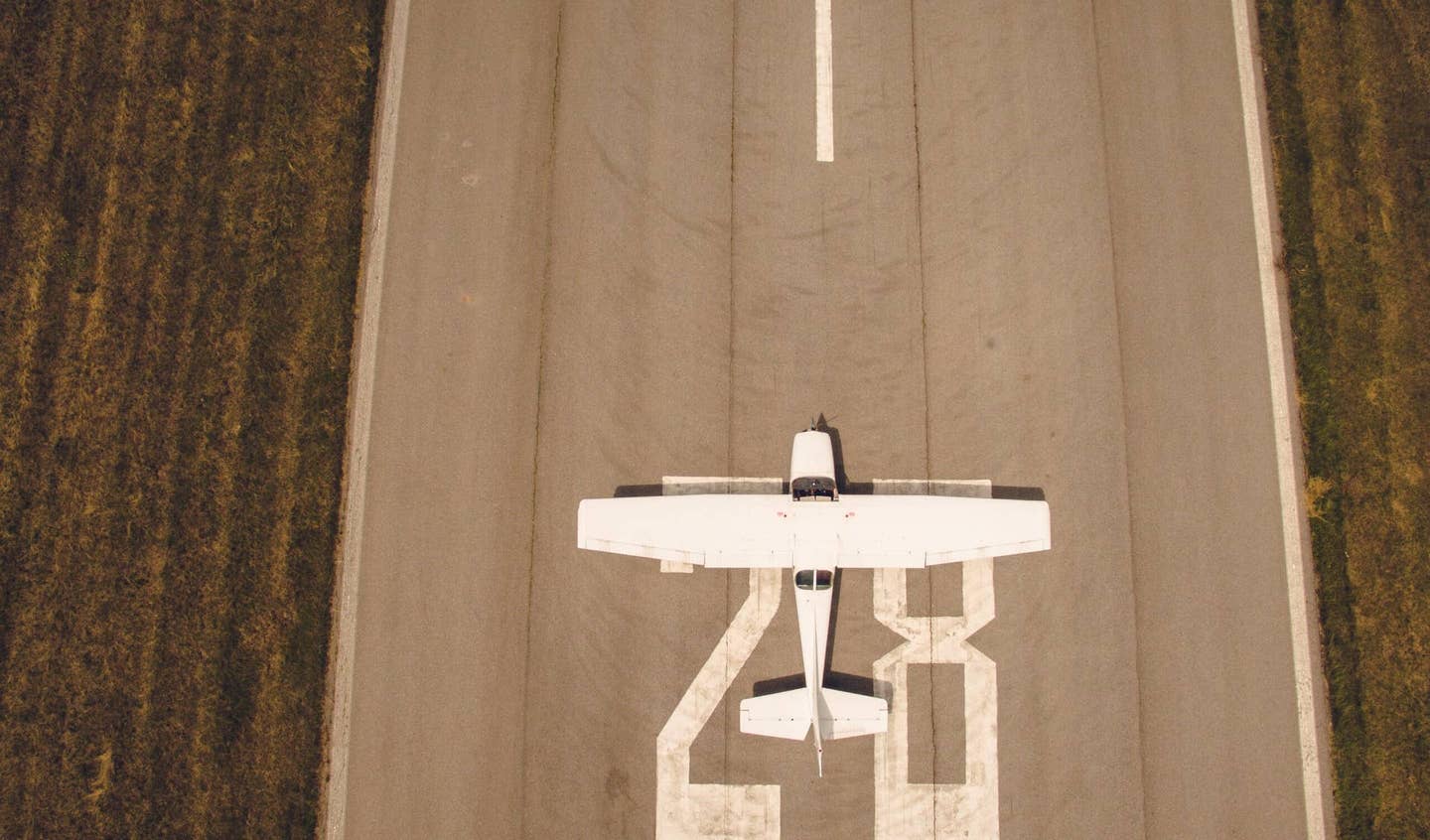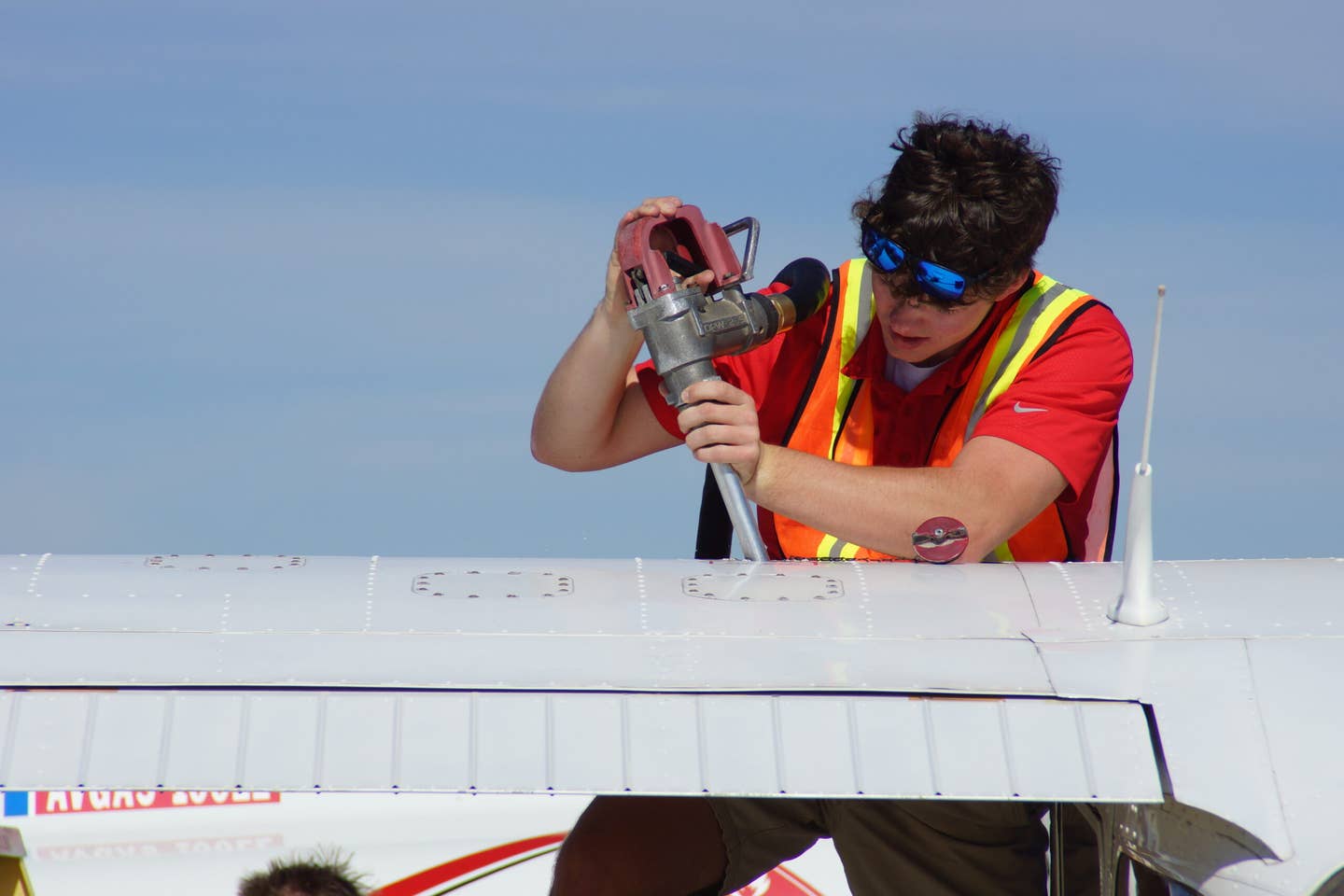Top Five Challenges of University Flight Students
Overcoming adversity is part of the LeTourneau University curriculum.
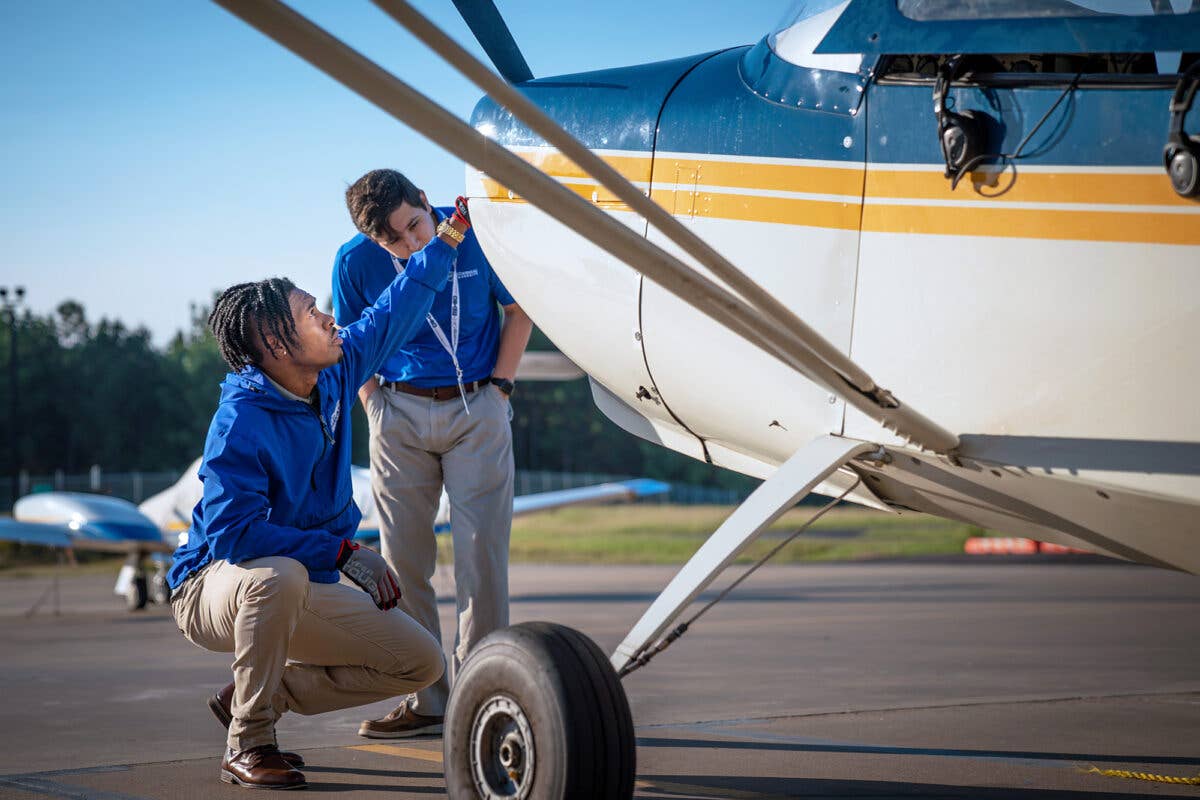
A student from LeTourneau University (LETU) preflights one of the aviation program’s American Champion Citabrias. [Courtesy: LETU]
Ask anyone who has ever learned to fly, and they will tell you that along the way, certain challenges slowed progress, and sometimes even threatened to bring forward progress to a screeching halt. When this happens, it is the job of the flight instructor to devise methods to get the student over that hump, so to speak, so they can continue training and complete their certification effort.
Teaching flight students in university flight programs is no different, says Claire Key, who was LeTourneau University’s (LETU) assistant chief flight instructor until August 2022, and now a check instructor and an adjunct professor in the Flight Science department, along with currently flying as a King Air 350 first officer with WheelsUp.
“One of the hallmarks of an education at LETU is that it’s a tight-knit community where students have a lot of support, both from faculty and staff as well as their peers,” Key said. “Each student enrolled in flight has an instructor who is assigned specifically to them for each curriculum, as well as just a few other students. This lets them build rapport and allows the instructor to tailor their training to them. In addition, new students have peer advisors, as well as academic advisors who help them socially and academically. We also have a training review process that flags any students who may be struggling with a flight course and pairs them with an experienced instructor who takes them through a clinic of sorts to work through their specific challenges. This ensures no one falls through the cracks and keeps us thinking outside the box to tailor training to individual students.”
Key submitted her list of what she feels are the top five challenges LETU’s flight students confront, and on many occasions, she’s had to put in the work to make sure her students make it past these tough phases of instruction so they can stay focused on graduation. Key also shared how she gets her students past these temporary setbacks.
1. Maintaining Motivation
“Flight training is a sprint, not a marathon,” Key said. “There are inevitably going to be challenges that arise along the journey to becoming a commercial pilot, such as weather, family issues, or illness. The number one way we try to help students with this issue is by dividing everything up into small achievable goals. So rather than focusing on the big task of getting an instrument rating in a semester, an instructor can divide the task into different stages and different lessons in that stage. Dividing this large segment of training into more manageable parts helps students remember that they are making steady and consistent progress towards their goals.”
Key added that at the end of each lesson, LETU’s instructors ask students to fill out a self-evaluation where they answer questions to state what went well, what needs work, and list some of the things they learned. “It’s crucial to celebrate their wins and remind them of the progress they have made. This teaches them that they can do it!” she said.
2. Switching Airframes While Maintaining Proficiency
“Throughout the course of becoming a commercial pilot, most students will eventually have to transition to new airplanes," Key said. "At LETU, students learn to fly three. These transitions can be a real hurdle for students as it can feel like they are starting over in some sense.”
The way LETU’s CFIs (and many others) overcome this challenge is to be very intentional at the beginning of a student’s training about the idea that for any desired performance, such as a Vy climb, there is a corresponding pitch attitude and power setting.
“This gives students the tools they need to jump into any airplane and start flying!" Key said. "For example, in the C172S [Cessna 172 Skyhawk], a student says they want to do a Vy climb at 74 kias. They set full power and hunt for a pitch that will give them that speed. When they find a pitch attitude that yields the desired performance, we ask them to take a mental picture, or even a real one, with their cell phone at eye level, to remember what it looks like. Now instead of ‘learning how to fly a Skyhawk,’ they can move into a new airframe with the confidence that they already know how to fly an airplane, but with a mission to find new pitch attitudes.
"Being consistent from the beginning of a student's training by teaching the foundational concept of ‘pitch plus power equals performance’ is how we can give students the skills they need to transition from airframe to airframe while maintaining excellent flight basics,” Key said.
3. Crosswind Landings
Like most CFIs, Key says landings are one of the toughest things for a student to master. She calls this the “landing plateau,” where a pre-solo student’s landings are close but not quite ready to be done on their own without any instructor assistance.
At LETU, the way instructors deal with this is through tailwheel training.
“For landings, we think this provides an advantage to a student, as they are sitting right on the centerline, and get quick and responsive feedback from the plane if they make a mistake,” Key said. “Another way we help students through the ‘landing plateau’ starts on the taxi out. We teach them to taxi out on centerline, and from there, we add in crosswind correction on the taxi. All that’s missing is the flare. Taking advantage of every small opportunity to practice different components of the landing throughout the flight helps students gain meaningful experiences that helps them put all the pieces together when it comes time for the real thing!”
4. Developing Sound Aeronautical Decision Making
“Aeronautical decision making (ADM) is another area that challenges students,” Key said. “It is common to get bogged down by the demands of a flight situation and fall into hazardous attitudes such as resignation or impulsivity. How we help students improve their ADM is through the use of ‘scenario-based’ training. Right from the beginning, we incorporate different scenarios into a student’s training so that they are flexing this muscle and gathering tools for how to respond in a real-world scenario.”
An example Key described is having an alternator fail, prompting the need to come back into a Class Delta airport with no radios and get light gun signals.
“Our instructors actually ask air traffic control to give them light gun signals, so the student has seen them in real life. These scenarios build upon each other throughout their training until they are responding to things as complex as simulated engine fires in a multiengine aircraft later in their training. The way to avoid the pitfalls of broken down ADM is consistent exposure to real-world scenarios when the pressure is on.”
5. Stalls
Key acknowledges that stalls can be a frightening thing for some primary flight students. This can cause them to overreact to stalls, she says, when they give up a lot of altitude in a recovery, induce a secondary stall, or, worse, freeze altogether.
"One thing I ask students right at the beginning is to tell me everything they have ever heard about stalls, that way we can address their concerns right from the start. We also might watch a YouTube video of a stall so they can actually see what the airplane will be doing. From there we just expose students to a wide variety of different stalls, all the way to a full stall. We’ll do some in a turn, straight ahead, some recovering to a glide, and maybe even a falling leaf stall. The goal is to show them that they aren’t that scary, and to help them have the presence of mind to respond promptly and smoothly,” Key said.
When CFIs take the initiative to work through these and many other challenges primary students face, forward progress can be made faster. Whether the student is from a university or the flight school at your local municipal airport, teaching the art of flying can be complex and rewarding. Ask any CFI, and they will tell you that watching a student’s first solo or seeing them achieve the milestone of earning their private pilot certificate is why they do what they do.

Sign-up for newsletters & special offers!
Get the latest FLYING stories & special offers delivered directly to your inbox


